LG UR781 is currently the cheapest model from the Korean manufacturer. It features an excellent WebOS system, which is the main advantage of this television. It satisfies most users with access to various streaming platforms and capabilities. The TV offers adequate picture quality for its price, which will certainly meet the expectations of many basic users. Although its HDR capabilities are somewhat limited by the lack of Dolby Vision or HDR10+, it supports basic formats such as HDR10 and HLG. The television handles low-quality content quite well, thanks to the smooth transition smoothing feature, which provides smooth and clear transitions, particularly appreciated when watching films from low-quality sources (e.g., free-to-air television). When it comes to gaming, the television has a very low input lag, which is a fundamental criterion. If we are looking for a budget option, it is quite a nice choice for those willing to compromise on a 120Hz panel for the sake of price. Although the brightness of the television is lower than in competing models, and the colour gamut coverage is limited, the LG UR781 still offers impeccable HDR content appearance due to the presence of dynamic tone mapping. With proper calibration, the television can achieve better colour reproduction and optimal sharpness, significantly enhancing comfort and enjoyment while watching.
- Matching (Score)
- Our verdict
- TV appearance
- Where to buy
- Contrast and black detail
- HDR effect quality
- Factory color reproduction
- Color reproduction after calibration
- Smoothness of tonal transitions
- Image scaling and smoothness of tonal transitions
- Blur and motion smoothness
- Console compatibility and gaming features
- Input lag
- Compatibility with PC
- Viewing angles
- Daytime performance
- Panel details
- TV features
- Apps
- Playing files from USB
- Sound
LG UR781 vs LG QNED87T6B
Direct comparison


Panel type: LCD VA
Resolution: 3840x2160
System: WebOS
Model year: 2023
Complete the survey to find out the result

Panel type: LCD IPS
Resolution: 3840x2160
System: WebOS
Model year: 2024
Complete the survey to find out the result

Overall rating
5.5
6.8
Movies and series in UHD quality
5.4
6.1
Classic TV, YouTube
5.8
6.1
Sports broadcasts (TV and apps)
4.2
7.2
Gaming on console
6.2
8.2
TV as a computer monitor
6.0
7.6
Watching in bright light
3.9
4.8
Utility functions
6.4
8.8
Apps
9.1
8.3
Sound quality
5.2
6.0
Complete the survey to find out what fits your preferences
Advantages
WebOS with a large number of applications
Low input lag values
Works great with PC
High native contrast
Game Bar
Fantastic for gamers and sport - 120hz, HDMI 2.1
Wide viewing angles
Good choice for regular TV - excellent digital processing and extensive user features
One of the better choices as a PC monitor
Remote with cursor - Magic
Disadvantages
Very low brightness
Poor viewing angles
The system can "lag"
Tragic contrast
Missing Dolby Vision, HDR 10+
Our verdict
LG QNED87T is a television that definitely stands out. It's a bit unconventional – it doesn't try to forcefully compete with top OLED models, but it makes up for it with modern features and user-friendly operation. It's equipment that works great for those who value comfort and versatility. The 120 Hz panel, VRR, and ALLM make the television perform well with dynamic content. Games run smoothly, the picture is sharp, and the responses are quick. If we spend time on a console, we will appreciate the lack of lag or blurring. When watching sports, quick actions are clear, without stutters. On a daily basis, LG QNED87T is simply comfortable. WebOS operates intuitively, apps launch quickly, and the Magic Remote control significantly eases operation. Voice control saves time, especially when searching for movies or series. Features like USB recording or Bluetooth provide more options, enhancing its versatility. The IPS panel is a big advantage regarding viewing angles. No matter where we sit in the room, the picture looks good. It's a great solution in larger spaces where not everyone has a direct view of the screen. Older films or standard television from built-in tuners also present quite well – the improvement in the quality of lower resolution materials works surprisingly well. However, there are certain things that can be eye-catching. The contrast is simply terrible. In dark scenes, there are no details at all. In the evening, in a darkened room, this is very noticeable. During the day, these imperfections are less felt, so LG QNED87T performs better in well-lit places. LG QNED87T is a television that has its strengths. It handles dynamic materials well, is easy to use, and is excellent for bright rooms. It's not the ideal model for evening viewings in darkness, but in everyday use, it definitely stands out. It's a universal device worth considering when choosing a new television.
TV appearance









Contrast and black detail
5.5/10
3.3/10
Local dimming function: No
Local dimming function: Yes, number of zones: 6 (6 x 1)
Contrast:
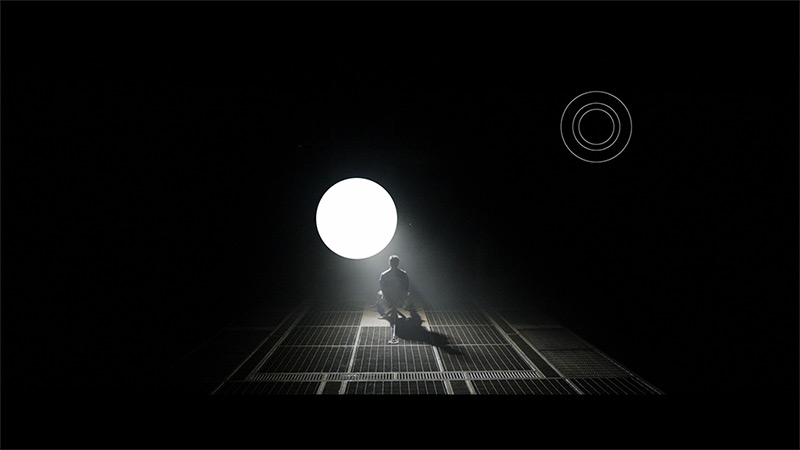
Result
4,450:1
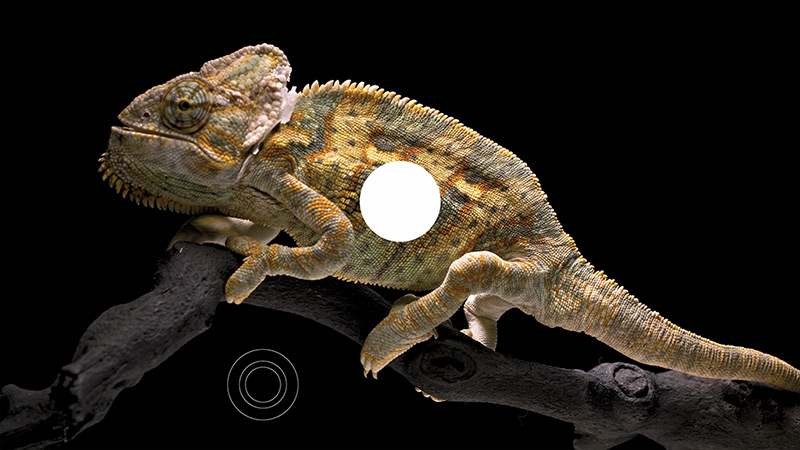
Result
4,550:1
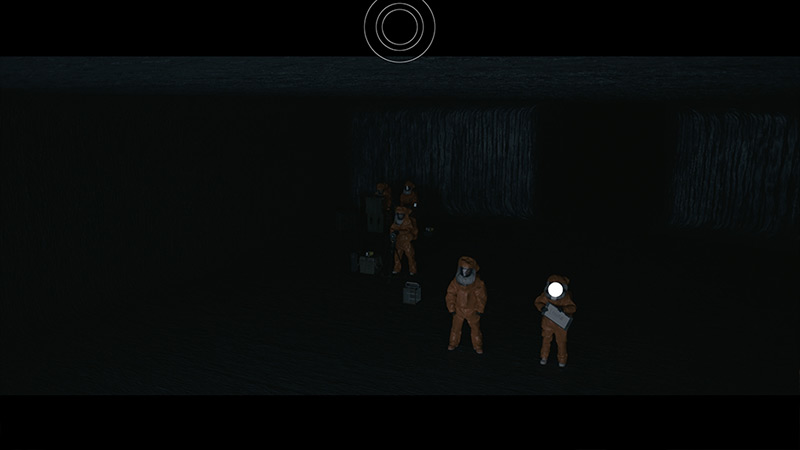
Result
4,500:1

Result
4,750:1
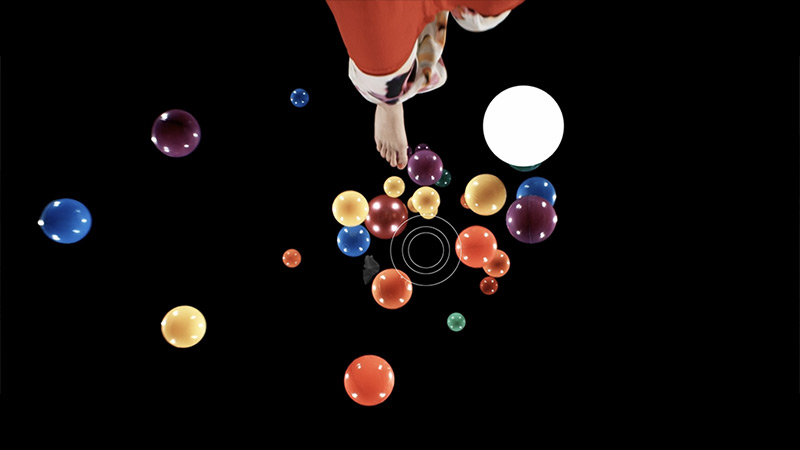
Result
3,650:1

Result
2,350:1

Result
1,250:1

Result
2,500:1

Result
1,450:1

Result
1,050:1
Halo effect and black detail visibility:


LG UR781 is a TV with a VA panel that stands out for its good native contrast, significantly better than that of IPS or ADS screens. Thanks to this technology, bright elements on a dark background look natural and there is no issue with distortion. Unfortunately, the lack of local dimming means that in darker rooms, the blacks are not ideal – they take on a bluish hue, which can be noticeable during nighttime viewing.
Despite this, the LG UR781 offers sufficiently good quality in dark scenes, especially for movie fans. The blacks are deeper than those of IPS panels, allowing for a more cinematic experience. The VA panel also provides stronger contrast, making the image look sharper and details in darker shots more visible. It's a solid choice for those who appreciate better picture quality in evening conditions.
In the category of black levels and contrast, the television LG QNED87T6B faces some challenges. Equipped with an IPS panel, it doesn't match the VA panel models in terms of performance in this area. Additionally, edge-lit dimming affects its poor results in this category. It's worth mentioning that the exception is the 50-inch variant, which has a VA panel and is not subject to this test.
Despite the manufacturer offering a dimming control option, the effects remain relatively weak. Test patterns show that the contrast is really poor, and in the test clip from the film "Sicario 2," it's clear to see how the television struggles with the backlighting, illuminating a large portion of the screen from below. This indicates that in more demanding scenes, the television has difficulties maintaining an appropriate level of contrast and black levels, which negatively impacts the overall visual experience.
HDR effect quality
3.3/10
5.3/10
Luminance measurements in HDR:

Result
209 nit
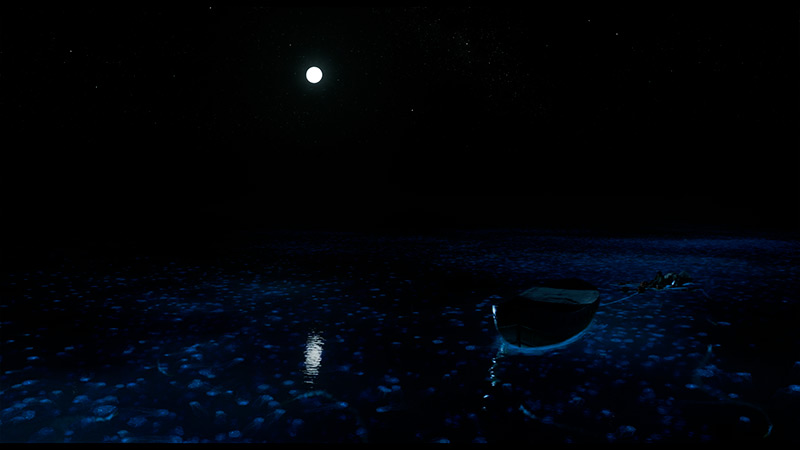
Result
185 nit
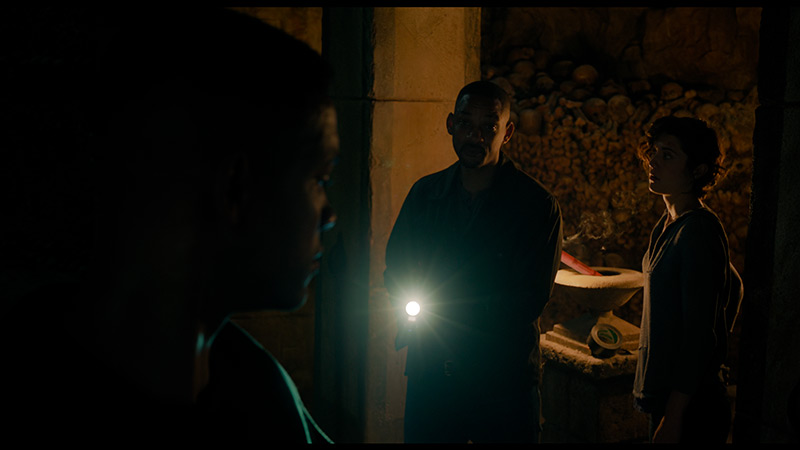
Result
241 nit
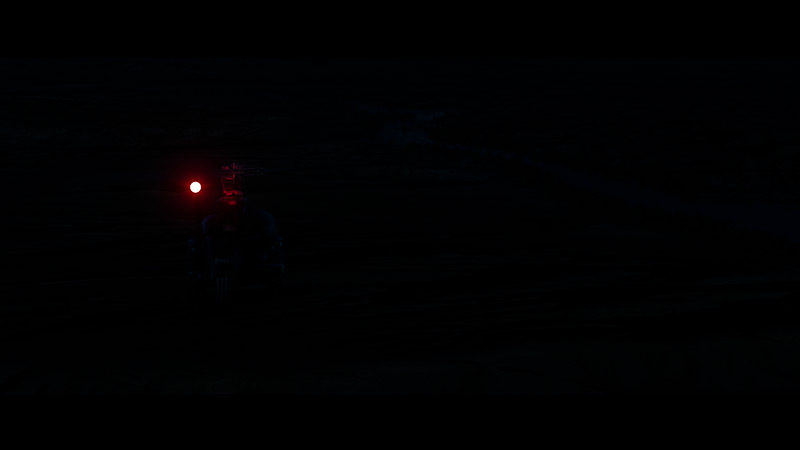
Result
147 nit

Result
234 nit

Result
409 nit

Result
486 nit

Result
574 nit

Result
464 nit

Result
439 nit
Scene from the movie “Pan” (about 2800 nits)


Scene from the movie “Billy Lynn” (about 1100 nits)


Static HDR10


HDR luminance chart:
LG QNED87T6B
HDR luminance
LG UR781
HDR luminance
In HDR mode, LG UR781 unfortunately does not impress with its brightness. In tests on five screens, the television achieved only around 200 nits, which is quite a low value for HDR standards. This brightness is comparable to levels typical for SDR, which means that HDR effects are not sufficiently vivid, and the picture may look less impressive, especially in dynamic, bright scenes. In HDR mode, it has certain limitations in colour reproduction. This means that colours may not be as intense and rich as in televisions that handle a wider colour gamut better. In practice, this can make the image less vibrant and dynamic, and HDR effects may not be as spectacular as one might expect. Additionally, UR781 LG has some issues with accurate colour representation in HDR mode, which makes content look less lively.
LG QNED87T6B delivers truly decent visual experiences when it comes to HDR. During our tests on test patterns, the television achieved brightness close to 500 nits, which is a satisfactory result and allows for good visibility of details in high dynamic range scenes. Support for basic HDR formats such as HDR10 and HLG ensures proper image quality. Unfortunately, the television does not support more advanced standards such as Dolby Vision or HDR10+, which are particularly important at this screen brightness. The lack of support for dynamic metadata means that in certain scenes, the television may struggle to fully reproduce details, especially in very bright areas – this is precisely when dynamic metadata could significantly improve image quality. Nevertheless, it is worth noting the excellent coverage of the wide DCI-P3 colour gamut, reaching as much as 96.4%. As a result, the colours displayed by the QNED87T6B model are more vivid and natural, enhancing the quality of 4K content viewed with a wide colour palette.
Factory color reproduction
3.9/10
5.4/10


Factory Mode
After calibration


Factory Mode
After calibration
Colour reproduction in LG UR781 in Filmmaker Mode, which although it is the best mode available from factory settings, is not without its flaws. First and foremost, the issue is with white balance, where the graph shows dips in the blue colour level. This phenomenon results in a shift towards yellow hues, making the image warmer than it should be. Such deviation means that the colours on the screen are not reproduced naturally, which may be particularly noticeable in scenes with white or neutral backgrounds. This can be confirmed by the Color Checker Test, which showed that some colours "escape" into other shades, indicating that the LG UR781 TV does not display colours accurately. This distortion can affect visual experiences, making film scenes seem less realistic and details may be displayed in incorrect colours, negatively impacting overall picture quality.
In terms of contrast, analysis of the gamma graph revealed drops to a level of 2.0, while the optimal value should be 2.4. This means that the TV may display darker parts of the image brighter in some scenes, reducing their depth and dynamism. Additionally, on the EOTF curve, which is responsible for brightness reproduction, an unnatural spike was noticed at the beginning. This phenomenon may result in excessive brightness boosting in the brightest parts of the image, leading to a loss of details in very bright scenes.
The colour accuracy in the LG QNED, even in Filmmaker Mode, which is the best factory setting, is not without its flaws. The main issue is white balance – we noticed that the level of blue on the graph tends to drop. This results in a shift in colours towards yellow, making the image have a warmer tone than it should. This deviation affects the naturalness of colour reproduction, especially in scenes with a white or neutral background. The Color Checker test confirmed that some colours are distorted and deviate from reality. Such distortion can make film scenes appear less realistic, and details are presented in incorrect colours, negatively impacting the overall image quality.
Regarding contrast, the gamma graph analysis showed significant drops, while the optimal value should be 2.4. This means that the television may display darker parts of the image brighter in some scenes, which reduces their depth and dynamics. Additionally, on the EOTF curve, which is responsible for brightness reproduction, an unnatural drop was noted at the beginning. This phenomenon can result in less accuracy in reproducing dark scenes, which in turn affects the overall image quality. The television may not convey full black depth, causing more demanding scenes to lose realism and detail. As a result, viewers may notice that details in the darker parts of the image become less distinct.
Color reproduction after calibration
6/10
7.8/10




After calibration, colour reproduction in SDR content is quite good. The white balance has been effectively improved, resulting in natural, balanced hues across different scenes. The gamma has also been adjusted, providing a more precise representation of details in the shadows and bright areas of the image. As a result, the LG UR781 TV performs well in everyday use, offering solid colour quality and clear, well-balanced images in SDR mode.
However, the situation is less favourable for HDR content. The LG UR781 TV does not support a wide colour gamut, which limits the depth and richness of colours that HDR can provide. The EOTF curve deviates from the ideal, leading to excessive highlighting of details in the bright areas of the image. Unfortunately, this approach results in significant colour reproduction errors, as confirmed by tests on the Colour Checker. Additionally, the low brightness level of the panel further negatively impacts HDR image quality, causing the effects of dynamic range to not be fully realised and colours to appear washed out.
Despite some shortcomings in HDR mode, the TV has significantly improved after calibration, especially in SDR content. The enhancement of white balance and gamma has notably increased image quality, providing a more natural and cohesive colour reproduction. Compared to its pre-calibration state, the difference is clear, and the LG UR781 TV now offers better performance in everyday use, particularly in standard dynamic range.
After calibration, the colours in SDR content look very good. The improved white balance translates to natural and harmonious shades in various scenes. Thanks to precise gamma tuning, details in shadows and bright areas of the image are accurately reproduced. The television performs excellently in everyday use, offering vibrant, well-balanced images and solid colour quality in HD. The biggest beneficiary here is also contrast. The gamma graph has been stripped of significant errors, giving the television a new dimension.
As for the white balance in 4K HDR, it has also been significantly improved. However, some errors still appear at the end of the graph. This may be due to the television's overly aggressive local dimming, which in some scenes affects the inaccurate reproduction of colours. It's difficult to talk about an improvement in brightness represented by the EOTF curve. The television, due to its construction limitations, has some drawbacks, and we can't overlook them. The Color Checker test confirms the issue with colour saturation – even though the television offers a wide colour palette, it fails to fully convey the director's intent.
Despite these shortcomings, the overall picture quality after calibration is significantly better than before. Adjustments in white balance and gamma tuning make the images more vivid and the colours closer to reality.
Smoothness of tonal transitions
8.6/10
8.6/10












TV LG UR781 handles tonal transitions exceptionally well, delivering very high picture quality in all scenes. Issues with gradation only arise in darker colours; however, they are subtle and not glaringly obvious. People with particularly sensitive eyes may notice these imperfections, but overall, the television provides very smooth tonal transitions.
The gradation in LG QNED is quite good, despite minor issues on the colourful dark sky. These small drawbacks do not detract from the fact that the gradation is one of the positive aspects of this model. Overall, the television handles smooth colour transitions well.
Image scaling and smoothness of tonal transitions
6.8/10
8/10
Smooth transition function


Image without overscan on the SD signal


Let's now address the function of smoothing tonal transitions and its impact on overall picture quality. As illustrated by the photo on the left, this function performs exceptionally mediocre; we chose the "low" level, which does not enhance quality but also does not blur the film grain. There is a possibility to increase the strength of this function, which could soften this gradation, but one must consider that the image will be too softened in certain scenes.
On the other hand, regarding image scaling, the television does not perform outstandingly, which may be particularly noticeable with lower resolution content. The LG UR781 television applies a slight, artificial sharpening boost, making the image appear sharper; however, this mainly results from the application of artificial contours. For some users, this may be an advantage, as they prefer more vivid, pronounced details. However, this is a subjective matter—such an effect may not appeal to everyone, especially if they desire a more natural appearance of the image.
When it comes to lower quality materials, the gradation looks really good. The feature called "Smooth Gradation" effectively smooths out the most problematic parts of the image, while not negatively affecting the film grain. For the best effect, it’s worth setting it to a low level. This solution significantly improves the quality of the displayed content, making the viewing of lower resolution materials more enjoyable and smoother.
In terms of digital processing, the image is displayed without cropping, known as overscan. Although slight fraying of the branches can be noticed against the model's background, everything looks very good. Users should be satisfied with the image quality when watching low-quality materials like standard television. The TV handles this task exceptionally well, providing a satisfying visual experience, even with lower quality content.
Blur and motion smoothness
2.2/10
7.8/10


Blur (native resolution, maximum refresh rate):






Blur (BFI function enabled):



The LG UR781 TV offers quite decent smoothness for movies, thanks to the "True Motion" option, which allows users to adjust the motion smoothing level on a scale from 0 to 10. Users can choose whether they want to maintain a more traditional, cinematic effect with a slight stutter (lower settings) or prefer a smoother image with a theatrical quality, which, although slightly deviating from the cinematic standard, may appeal to many.
In dynamic sports content and gaming, the LG UR781 TV performs worse. The TV has a 60Hz panel, which limits its interpolation capabilities to these values; therefore, smoothness can be improved in films, but motion blur cannot be reduced. Additionally, the lack of support for 120 Hz and BFI (Black Frame Insertion) technology means that fast-moving objects become blurred, and the panel's response time is too slow, negatively affecting clarity in fast scenes. As a result, the TV may not meet the expectations of gamers and sports fans who are counting on a smooth, clear image without motion blur.
The television provides decent smoothness when watching movies, thanks to the “Tru Motion” feature, which allows adjustment of motion smoothing from 0 to 10. De-Judder regulates motion smoothness, while De-Blur adjusts motion sharpness. Users have the option to choose between a traditional cinematic effect with subtle juddering motion (lower settings) and a smoother, theatrical image. Although the latter deviates slightly from the cinematic standard, it may be appealing to many viewers.
As for gamers and sports fans, the LG QNED87 television with a 120Hz panel will surely not disappoint. And with the use of an IPS panel, the response time is typically better than that of VA panels available at a similar price. This ensures smoother gameplay and dynamic experiences when watching sports events.
Console compatibility and gaming features
4.7/10
9.2/10
- ALLM
- VRR
- VRR range48 - 120Hz
- Dolby Vision Game Mode
- Correct implementation of HGIG
- 1080p@120Hz
- 1440p@120Hz
- 4K@120Hz
- Game bar








When playing on a console, the LG UR781 TV offers several significant features that can affect the gaming experience, but it also has some limitations. On the plus side, it includes ALLM (Auto Low Latency Mode), which automatically optimises the picture settings by switching the LG UR781 TV to low latency mode, which is beneficial for gamers. The TV also supports correct implementation of HGiG, meaning HDR games look as intended by the creators.
Unfortunately, it lacks support for Variable Refresh Rate (VRR), which can result in worse gameplay smoothness, especially in more dynamic games. It also does not support Dolby Vision mode for gaming, which limits HDR picture quality in games using this format. The TV has a 60Hz panel, so it does not support higher frequencies at other resolutions, such as 1080p@120Hz, 1440p@120Hz, or 4K@120Hz, which is a significant downside for gamers expecting smoother gameplay at higher resolutions. There is also no support for G-Sync technology, which limits image synchronisation in games.
On the positive side, the presence of a Game Bar feature allows for quick access to settings for gamers and makes it easier to adjust picture parameters during gameplay.
LG QNED offers a range of features that make it an excellent choice for gamers looking for a high-performance television. The TV is equipped with four HDMI 2.1 ports, allowing connection to the latest consoles like PlayStation 5 and Xbox Series X, utilising full functionality including Variable Refresh Rate (VRR) and Auto Low Latency Mode (ALLM). Thanks to the Game Bar feature, gamers can quickly and easily manage all game settings without needing to navigate complex menus. Parameters such as VRR, ALLM, Multi View, and frame rate monitoring can be adjusted. The TV also supports G-Sync and FreeSync technologies, which is particularly important for owners of Nvidia and AMD graphics cards. G-Sync and FreeSync synchronise the TV's refresh rate with the graphics card. The 120Hz panel guarantees incredible motion smoothness and image clarity. Combined with the Black Frame Insertion (BFI) feature, which is available at 60Hz and 120Hz, gamers can enjoy an even sharper and smoother picture. LG QNED87 is a television that meets the expectations of even the most demanding gamers, offering modern technologies and features that significantly enhance comfort and satisfaction during gaming.
Input lag
10/10
9.9/10
SDR
HDR
Dolby Vision
Measuring input lag on the LG UR781 television turns out very well, regardless of the signal or resolution. Gamers will surely appreciate the manufacturer's efforts, as gameplay in 4K at 60 Hz with HDR enabled achieves only 13 ms of lag. This is an exceptionally low score that provides smooth and responsive experiences, even in fast-paced online games where every millisecond counts.
The LG QNED stands out with an extremely low input lag, which is crucial for smooth and responsive gaming. For a refresh rate of 120Hz, the input lag values do not exceed 6 ms, while at 60Hz, the input lag is a maximum of 15 ms. These are truly impressive results that ensure a player's reactions are almost instantaneously reflected on the screen.
Compatibility with PC
6/10
7.6/10


Displaying text in 4K resolution at 60 Hz is exceptionally sharp, with excellent colour reproduction, meaning that even fine details like grey letters are clearly visible, despite the use of a BGR pixel layout. An input lag of 14 ms ensures quick responses, making the television ideal for work. Unfortunately, the employed 60 Hz panel and lack of G-Sync do not meet the needs of gamers using a computer, resulting in a lower rating for gaming. Nonetheless, the television performs well in office tasks and media viewing, which compensates for its use at work.
The LG QNED television works perfectly with a computer, offering very good font readability. This makes working and browsing content exceptionally comfortable. The high refresh rate of 120Hz provides a smooth and vivid image. It combines a large workspace with performance, making it a genuine pleasure to use. However, for more demanding users, it may be disappointing that the TV has issues displaying fonts on a dark background. Instead of white letters, they take on a greenish hue.
Viewing angles
3.5/10
7.1/10
A characteristic feature of VA panels is the noticeable drop in image quality at angles. In the case of this model, when viewed at a 45-degree angle, brightness decreases by as much as 70%, which significantly affects the depth of black and overall image quality. The LG UR781 televisions with VA panels do have better contrast when viewed head-on, but their viewing angles are limited compared to other technologies, such as IPS.
When it comes to viewing angles, LG QNED87 performs really well. Thanks to its IPS panel, it offers wide viewing angles compared to VA panels. This means that the picture remains clear and does not lose quality even at an angle. While it may not achieve the perfect results of OLED TVs, which maintain colours and brightness regardless of the viewing angle, in terms of LCD QNED87 screens, it stands out positively. This makes it a great choice for larger rooms where viewers often watch at an angle.
Daytime performance
3.9/10
4.8/10




Panel brightness
Average luminance SDR
LG QNED87T6B: 428 cd/m2
LG UR781: 231 cd/m2
Thanks to its satin finish, it handles glare well during daytime viewing, making reflections less bothersome. However, due to its low brightness in SDR mode, which is only 231 nits, it may struggle to display images clearly in brighter rooms, especially on sunny days. Watching in such conditions may result in poorer visibility and reduced image clarity.
During the day, the LG QNED television performs adequately. It has a satin finish that doesn’t suppress reflections the best, which can be noticeable in bright rooms. Nevertheless, with quite good brightness at 430 nits, the image remains visible and clear. Although reflections may be somewhat bothersome, the brightness of the television allows for comfortable use during the day.
Panel details
Subpixel Structure:


Panel uniformity and thermal imaging:


LG UR781
LG QNED87T6B
TV features
6.4/10
8.8/10
- HDMI inputs3 x HDMI 2.0, 0 x HDMI 2.10 x HDMI 2.0, 4 x HDMI 2.1 48Gbps
- OutputsToslink (Optical audio), eARC (HDMI), ARC (HDMI)Toslink (Optical audio), eARC (HDMI), ARC (HDMI)
- Network InterfacesWi-Fi 2.4GHz, Wi-Fi 5GHz, Ethernet (LAN) 100MbpsWi-Fi 2.4GHz, Wi-Fi 5GHz, Ethernet (LAN) 100Mbps
- TV receptionDVB-T, DVB-T2, DVB-S, DVB-S2, DVB-CDVB-T, DVB-T2, DVB-S, DVB-S2, DVB-C
Classic features:
- Recording to USB (terrestrial TV)
- Recording programming
- Picture in Picture (PiP)
- RF remote control (no need to aim at the screen)
- Backlit remote control
- Teletext
- Audio only mode
- Bluetooth headphones support
- Simultaneous Bluetooth headphones & TV audio
Smart features:
- AirPlay
- Screen mirroring (Windows Miracast)
- Voice search
- Voice search in native language
- Ability to connect a keyboard and mouse




WebOS in LG UR781 televisions is a modern, intuitive system that provides easy access to popular streaming apps like Netflix and YouTube, among others. It features a simple interface and supports functions such as Screen Mirroring, AirPlay, and Bluetooth. The system supports the connection of external devices like keyboards and headphones, offering rich personalisation options and advanced multimedia features. Unfortunately, the base model of the LG does not come with a Magic remote (on-screen cursor), which is a shame! It's also worth noting that in the case of this model, WebOS was not particularly responsive and can be a bit annoying.
LG QNED87 TV offers a multitude of features that significantly enhance user comfort. Let's start with the WebOS system, which we believe has the most user-friendly interface among all TVs available on the market. One of its greatest advantages is the remote control with a built-in gyroscope, known as the Magic Remote. Thanks to this, navigation is intuitive and quick, making TV usage a pleasure. WebOS also supports a range of smart features that greatly simplify everyday use of the television. Among them is AirPlay, which allows easy content sharing from Apple devices such as iPhone or iPad. Additionally, the TV supports a wide range of streaming applications, such as Netflix, YouTube, Amazon Prime Video, and many others, providing access to favourite movies and series in one place. When it comes to everyday use, LG QNED87 does not disappoint. The TV offers a USB recording feature, which is becoming increasingly rare in modern models. This allows users to record their favourite programs and watch them at any time. Furthermore, the TV has a Picture-in-Picture (PIP) function, although only for one tuner, enabling the viewing of two programs simultaneously. Connecting additional devices via Bluetooth is simple and hassle-free. The TV supports various Bluetooth devices, such as mice, keyboards, and headphones, increasing its versatility and allowing easy personalisation of the user experience. With all these features, the LG QNED87 TV is a versatile and convenient device that meets the expectations of even the most demanding users.
Playing files from USB
8.2/10
8.2/10
Supported photo formats:
Maximum photo resolution:


Television LG UR781 will play most files and video codecs, and when subtitles are added to the film, you can even change the colour or size of the font. The biggest downside is the lack of support for less popular photo formats.
The built-in media player in the LG QNED87 television should not disappoint anyone. It offers rich capabilities when it comes to playing video and audio files. It supports many popular formats, ensuring versatility and user convenience. The only drawback might be the limited number of supported photo formats. However, this mainly concerns those less popular formats, so most users should be satisfied with the player's functionality. For everyday use and typical multimedia formats, the player performs very well.
Apps
9.1/10
8.3/10














































Sound
5.2/10
6/10
- Maximum volume--
- Dolby Digital Plus 7.1
- Dolby True HD 7.1
- Dolby Atmos in Dolby Digital Plus (JOC)
- Dolby Atmos in Dolby True HD
- DTS:X in DTS-HD MA
- DTS-HD Master Audio
Although the TV offers a certain hint of bass, the overall sound quality is average. The television does not support most advanced surround sound codecs, which limits its capabilities in fully reproducing audio effects. The only support for surround sound is the ability to stream audio to an external device, such as a soundbar, using Dolby Digital Plus.
When it comes to sound, it can be said that it's moderately pleasant. There's a lack of pronounced bass, and the mid tones seem a bit unclear. This isn't an ideal situation for audiophiles, but it's worth noting that the television plays DTS files without any issues. This is a feature that's missing in many other televisions, so the LG QNED87 deserves praise for this support.
